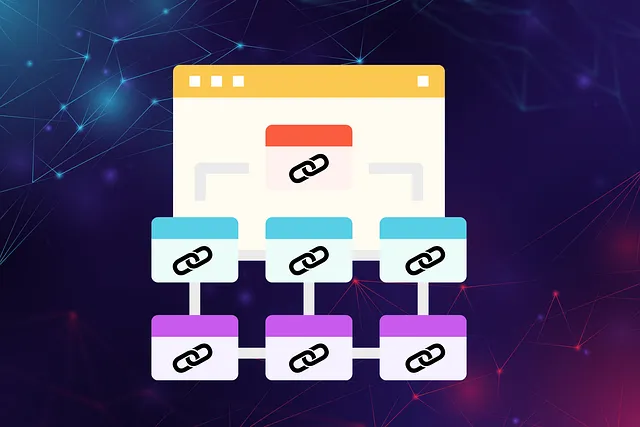Internal linking for SEO is a powerful tool that boosts website performance by guiding users and search engines between relevant pages, improving navigation and user experience. By strategically integrating transactional keywords like "internal linking for SEO tips" in anchor text, you enhance site visibility and attract the right audience. Using the right tools with intuitive interfaces allows for efficient link management, visual sitemaps, and performance tracking. A well-designed strategy improves user sessions, lowers bounce rates, and creates a rich interconnected experience. Regularly analyzing CTRs, time spent on pages, and bounce rates helps identify high-performing content and areas for improvement, ensuring a healthy internal link profile that supports robust SEO efforts.
In today’s digital landscape, internal linking is an essential strategy for enhancing search engine optimization (SEO). This article delves into the art of optimizing landing pages with transactional keywords, specifically tailored for tools that facilitate internal linking. We explore why internal linking matters, its impact on rankings, and how to choose and place links effectively. Learn best practices for maintaining a healthy link profile while fostering a seamless user experience, ultimately revolutionizing your SEO strategy.
- Understanding Internal Linking: Why It Matters for SEO
- The Role of Transactional Keywords in Optimizing Landing Pages
- Choosing the Right Tools for Effective Internal Linking Strategies
- Creating a Seamless User Experience Through Strategic Link Placement
- Measuring and Analyzing the Impact of Internal Links on Search Engine Rankings
- Best Practices for Maintaining a Healthy Internal Link Profile
Understanding Internal Linking: Why It Matters for SEO

Internal linking is a fundamental strategy in search engine optimization (SEO) that involves creating links within your website’s content to enhance its overall performance and visibility on search engines like Google. By implementing effective internal linking for SEO, you can significantly improve user experience and help search algorithms understand your site’s hierarchy and relevance.
When you create an internal link, you’re essentially guiding users (and search engine crawlers) from one relevant page to another within your website. This simple action has profound implications for SEO. It allows search engines to crawl through your site more efficiently, spreading link equity across relevant pages. As a result, the linked pages gain authority and rank higher in search results, leading to increased organic traffic. An internal linking for SEO tutorial or tips can provide valuable insights into optimizing this process, ensuring that each link is contextual, useful, and contributes to a seamless user journey.
The Role of Transactional Keywords in Optimizing Landing Pages

In today’s digital era, optimizing landing pages is a crucial aspect of boosting online visibility and driving user engagement. Transactional keywords play a pivotal role in this strategy, especially when it comes to internal linking for SEO. By integrating relevant terms that reflect user search intent, such as “internal linking for SEO tips” or “internal linking for SEO tutorial,” you can enhance the relevance of your landing pages to specific queries. This not only attracts the right audience but also provides a clear signal to search engines about the page’s purpose, leading to better ranking potential.
When implementing internal linking for SEO optimization, these transactional keywords act as a bridge between user needs and the information your site offers. They help users discover valuable content within your website by guiding them to relevant pages. Moreover, using such keywords strategically can improve the overall user experience, encouraging visitors to explore more of your site. This network of interconnected pages not only satisfies search engine algorithms but also fosters a vibrant online community, where each click is a step closer to fulfilling information needs.
Choosing the Right Tools for Effective Internal Linking Strategies

Choosing the right tools is paramount when crafting effective internal linking strategies for SEO. The wrong tool can lead to disorganized link structures, confusing users and search engines alike. Look for platforms that offer intuitive interfaces allowing you to create relevant and contextually-rich anchor text, easily identify existing links on your site, and analyze link performance over time.
Remember, an internal linking for SEO tutorial or optimization guide is only as good as the tools behind it. Incorporate features like visual sitemaps, link audit capabilities, and reporting functionalities to track your progress and make data-driven adjustments. By leveraging the right tools, you can streamline your workflow, improve user experience, and ultimately boost your site’s search engine rankings through strategic internal linking for SEO.
Creating a Seamless User Experience Through Strategic Link Placement

A well-designed internal linking strategy significantly enhances user experience and improves search engine optimization (SEO). By strategically placing links within your website’s content, you create a seamless journey for visitors, allowing them to effortlessly navigate between relevant pages. This approach benefits both users and search engines by providing quick access to valuable information.
When implementing internal linking for SEO, consider using keywords naturally in anchor text to indicate the topic of the linked page. This practice not only assists search algorithms in understanding your site’s architecture but also guides users, making it easier for them to discover related content. An effective internal linking for SEO tutorial or tips resource can further optimize this process, ensuring your website offers a rich, interconnected user experience that encourages longer sessions and lower bounce rates.
Measuring and Analyzing the Impact of Internal Links on Search Engine Rankings

Understanding the impact of internal links on search engine rankings is a crucial aspect of any effective internal linking for SEO strategy. By utilizing tools that track and analyze these connections, marketers can gain valuable insights into user behavior and search engine algorithms. Measuring the success of internal linking involves evaluating metrics such as click-through rates (CTRs), time spent on pages, and bounce rates. These data points help identify high-performing content and areas for improvement within a website’s SEO.
A comprehensive internal linking for SEO tutorial would guide users through setting up analytics tools to monitor these interactions. With this data, you can refine your internal linking strategy, ensuring that relevant pages are interconnected effectively. This process not only boosts user experience but also signals to search engines the hierarchical and thematic structure of your website’s content, thereby enhancing its overall SEO.
Best Practices for Maintaining a Healthy Internal Link Profile

Maintaining a healthy internal link profile is key to enhancing your website’s SEO efforts. One best practice involves ensuring that links are contextually relevant and provide genuine value to users. Each internal link should serve a purpose, guiding visitors to content that is closely related to their search intent. This not only improves user experience but also allows search engines to better understand the hierarchy and relevance of your web pages.
Another crucial aspect is diversity in anchor text. While keeping links natural, vary the anchor text used to avoid over-optimization. Incorporating relevant keywords in anchor text can signal to search engines that a page is authoritative on that particular topic, boosting its SEO for specific queries. Regularly reviewing and updating your internal linking structure through an internal linking for SEO tutorial or strategy will help maintain a robust profile, ultimately contributing to better search rankings and user engagement.
